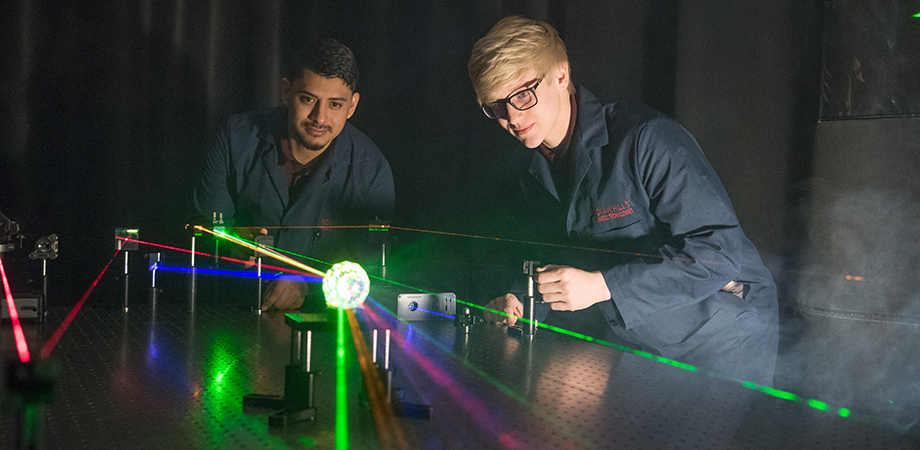Where is the New Collar Workforce?

Optical engineers are commonly defined as people with advanced degrees who design new products and systems, whereas technicians are the people working with their hands to create those systems. The optics economy depends on technicians to bring products to market, but there's a serious workforce shortage.
Laser company Coherent is familiar with the issue. "About 20 years ago we went through the telecom boom and everyone was hiring, and it was very difficult to get trained technicians, so we hired people that didn't have enough skill level," says Norman Hodgson, the vice president for technology and advanced research at Coherent. "Because we had unskilled technicians building lasers, we then had a bunch of warranty issues about a year later. It became very obvious that there's a need to have more skilled people building lasers."
The reasons for this labor shortage are many, but most agree that the stigma of not pursuing a four-year college degree is one of the biggest barriers.
"In the US there's a cultural idea that if you don't go to university, you're a failure," says Erick Koontz, director of engineering at FISBA US. "We should be showing students that they can still earn quite a lot and have a great career in optics without going through the intermediate purgatory of being saddled with crazy amounts of student loan debt."
Skilled jobs like optical technicians and electrical engineers are often referred to as "new collar." These jobs bear little resemblance to industrial assembly line manufacturing jobs of sixty years ago, because they are often skilled, rewarding, and well paid, with opportunities for advancement and continued training. But getting the word out about these technical career paths remains a challenge.
Alexis Vogt, endowed chair and associate professor of optics at Monroe Community College (MCC) in Rochester, New York, is well aware of the PR effort needed to make optics part of high school student vocabulary. She says, "The biggest obstacle is getting the word out. No high schooler is thinking ‘I'm going to be an optics technician.'"
The outreach about the availability of high-tech jobs may need to begin with parents and high school guidance counselors, both of whom have a lot of influence over high school students' post-secondary education.
In addition, adults considering a career change, including veterans and immigrants, might find a career as an optics and photonics technician an attainable option. Last year, Coherent worked with San Jose City College (SJCC) to create a 30-second video to promote the SJCC Laser Technology Program. The trailer played for two weeks in eight movie theatres in the San Francisco Bay Area.
If a convincing message can stimulate a new wave of technicians, the workforce will be ready for them. Last year, 17 program graduates from MCC entered the optics industry, but that number doesn't begin to meet the regional need. According to Vogt, 574 technician jobs are needed per year in the Finger Lakes area of New York alone, and 97 percent of skilled optics technician job openings go unfilled.
In the meantime, companies are getting creative about addressing their shortage. In 2016, Optimax took advantage of federal funding to develop an apprenticeship program. Their strategy is to hire for unskilled entry-level positions, then offer apprenticeships to build employees' skills. Apprentices take classes at MCC while working at Optimax.
Coherent, based in San Pablo, California, takes a different approach. They partner with the Laser Technology Program at SJCC, where they help design the curriculum and donate equipment, like breadboards and laser systems. Coherent and other Bay Area laser companies have hired many of the graduates from the SJCC laser technology program.
| SPIE will be hosting a session at Photonics West 2020 to bring together employers interested in increasing the number of technicians in the pipeline and colleges that are training technicians. Contact us if you are interested in attending. |
But it's still a drop in the bucket. "In our facility alone, we have 150 technicians," says Hodgson. "So if the SJCC program graduates 15 people per year, and there are seven laser companies in the Bay Area, it's just not enough."
"This is a huge hole that needs to be filled," agrees Koontz. "I think the community colleges in partnership with companies can and should do most of the heavy lifting. But SPIE may be useful in lighting the spark, networking between industry and academia."
Gwen Weerts is the managing editor of Photonics Focus.
| Enjoy this article? Get similar news in your inbox |
|



